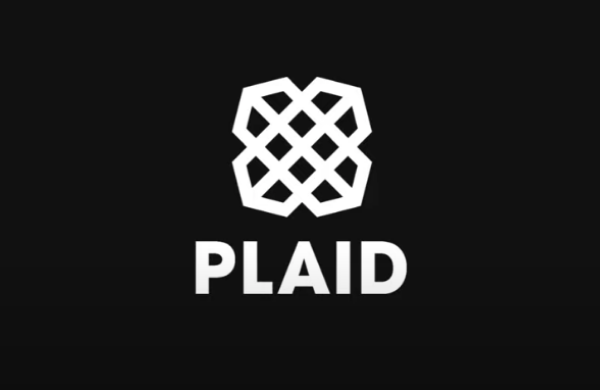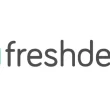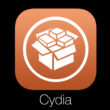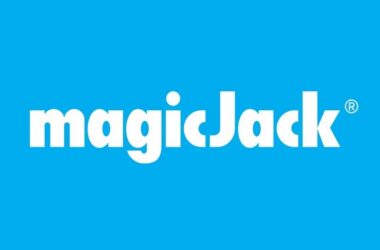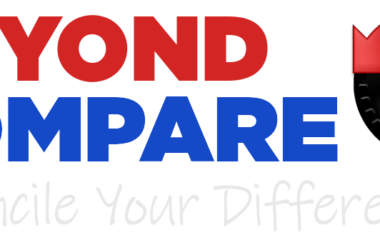Plaid, a prominent financial technology company, specializes in furnishing APIs designed to facilitate seamless connections between applications and users’ bank accounts. Renowned for its robust solutions, Plaid has emerged as a popular choice for developers and businesses seeking efficient access to financial data. However, the dynamic landscape of financial technology introduces a variety of alternatives in the market, each offering comparable services.
These alternatives present a diverse array of options, catering to the specific needs and preferences of developers and businesses engaged in harnessing financial data for innovative applications. As the demand for secure and efficient financial data integration grows, the exploration of alternatives to Plaid underscores the competitive and evolving nature of the financial technology sector.
Features And Limitations Of Plaid Alternatives

Delving into a comprehensive analysis of the features and limitations of Plaid alternatives unveils a nuanced understanding of the capabilities and challenges within the realm of financial data aggregation APIs. From diverse functionalities to inherent constraints, these plaid alternatives offer a spectrum of options for developers and businesses seeking reliable solutions for connecting applications with users’ financial accounts. As the fintech landscape evolves, this exploration sheds light on the intricacies that shape the decision-making process, guiding stakeholders in selecting the most suitable financial data aggregation API for their specific needs and use cases.
Features:
- Data Aggregation: These APIs can aggregate financial data from various sources, including bank accounts, credit cards, investments, and loans, providing a comprehensive view of a user’s financial situation.
- Transaction Categorization: They often include features for categorizing transactions, which can help users understand their spending habits, create budgets, and track expenses more effectively.
- Real-Time Updates: Many of these APIs offer real-time or near-real-time updates of financial data, ensuring that users have access to the most current information about their accounts and transactions.
- Security: Security is a top priority for these APIs, with features such as bank-level encryption, tokenization, and multi-factor authentication to protect users’ sensitive financial information.
- Integration: Financial data aggregation APIs are designed to be easily integrated into third-party applications, allowing developers to build personalized financial management tools, budgeting apps, investment platforms, and more.
Limitations:
- Limited Coverage: While these APIs support integration with a wide range of financial institutions, there may still be some banks or credit unions that are not supported, which can limit their usefulness for certain users.
- Data Accuracy: Despite efforts to ensure data accuracy, there may be occasional errors or discrepancies in the aggregated financial data, which could impact the reliability of the information presented to users.
- Regulatory Compliance: Financial data aggregation APIs must comply with various regulations, such as GDPR in Europe and data privacy laws in other jurisdictions, which can add complexity and limitations to their use.
- Service Reliability: Dependence on third-party APIs means that the reliability and availability of these services are subject to factors outside of the developer’s control, such as downtime or outages on the API provider’s end.
- Cost: While some basic features of financial data aggregation APIs may be available for free or at a low cost, access to more advanced functionality or higher usage limits may require a paid subscription or usage-based pricing, which can be a limitation for developers with limited budgets.
What Sets Plaid Alternative Apart
Each Plaid alternative distinguishes itself through unique features, strengths, and approaches within the financial technology ecosystem. While some alternatives may prioritize specific regions or offer more extensive coverage of financial institutions, others might excel in providing advanced analytics or catering to niche use cases. Variances in security protocols, data accuracy, and compliance measures also contribute to the differentiation among alternatives. Additionally, differences in pricing models, ease of integration, and scalability can impact the suitability of each plaid alternative for diverse applications. Developers and businesses often navigate these distinctions to select an alternative that aligns precisely with their specific requirements, reflecting the nuanced and evolving landscape of financial data aggregation APIs.
Need Of Plaid Alternative

The imperative for Plaid alternatives becomes evident in response to a multifaceted landscape of financial technology. These alternatives are indispensable for meeting the distinct demands of various industries, providing tailored solutions that align with the nuanced requirements of personal finance management, investment, and lending. The global nature of financial transactions necessitates alternatives that not only ensure compliance with diverse regional regulations but also boast local expertise to navigate the intricacies of specific financial ecosystems.
As the fintech industry matures, the need for alternatives intensifies to accommodate specialized use cases, offering advanced analytics, support for specific financial instruments like cryptocurrencies, and other niche functionalities. Furthermore, the appeal of competitive pricing models and enhanced flexibility positions Plaid alternatives as key players, addressing the financial needs of startups and businesses of varying sizes while ensuring scalability and cost-effectiveness in the rapidly evolving realm of financial data integration.
1. Diverse Industry Requirements
In the dynamic landscape of financial technology, industries ranging from personal finance management to investment and lending have distinct and evolving needs. Plaid alternatives become essential as they are tailored to address specific industry requirements that might not be fully met by a general-purpose solution like Plaid. Whether it’s the need for specialized data sources, compliance with industry-specific regulations, or features unique to a particular sector, plaid alternative offer a more nuanced approach, ensuring that diverse financial applications can thrive in their respective niches.
2. Global Reach and Local Expertise
Financial transactions occur on a global scale, and the regulatory environments can significantly differ from one region to another. Plaid alternatives, recognizing the importance of providing comprehensive coverage, focus on offering both global reach and local expertise. By honing in on specific geographical areas, these plaid alternative ensure not only compliance with regional regulations but also an in-depth understanding of the local financial ecosystem. This nuanced approach positions them as valuable alternatives, particularly for businesses operating in multiple jurisdictions seeking seamless and compliant financial data integration.
3. Specialized Use Cases
The expanding landscape of financial technology brings forth a myriad of specialized use cases that may not be fully addressed by more general financial data aggregation platforms like Plaid. As industries evolve, businesses often require tailored solutions for advanced analytics, unique financial instruments, or specific functionalities. Plaid alternatives emerge to fill these gaps, providing specialized services that cater to the intricate needs of applications dealing with cryptocurrencies, alternative investments, or other niche financial instruments, ensuring that developers have the tools they need for their specific use cases.
4. Competitive Pricing and Flexibility
While Plaid remains a robust and widely used solution, the financial technology market welcomes alternatives that differentiate themselves through competitive pricing models and enhanced flexibility. Some businesses, especially startups and smaller enterprises, may find plaid alternative more appealing due to cost-effective solutions that align with their budget constraints. Moreover, the flexibility in APIs and pricing structures offered by these alternatives accommodates businesses of varying sizes and scales of operation, providing scalability without compromising on the quality of financial data integration services. The ability to tailor subscription plans to specific needs makes these alternatives attractive to a diverse range of users.
Commonly Used Plaid Alternatives

Embarking on a comprehensive exploration of the ever-evolving fintech landscape reveals a diverse array of financial data aggregation platforms, each vying for prominence as a credible alternative to Plaid. These commonly used alternatives, emerging as pivotal players in the industry, contribute significantly to shaping the future of financial data integration. From Yodlee’s historical prowess and TrueLayer’s secure European foothold to Finbox’s specialized metrics and Salt Edge’s comprehensive open banking solutions, these alternatives showcase the dynamism and innovation inherent in the sector.
Tink, with its focus on user-centric personal finance management, and the community-driven approach of the Open Bank Project, further enrich the ecosystem. Plinq’s prowess in analytics adds another layer of versatility. As businesses and developers navigate this landscape, these alternatives offer tailored solutions, each contributing uniquely to the transformative journey of financial technology.
1. Yodlee (Envestnet)
Yodlee, now a part of Envestnet, boasts a rich history as a pioneer in financial data aggregation. Their suite of APIs is renowned for its versatility, enabling developers to access a wide array of financial data sources, including bank accounts, credit cards, investments, and more. Yodlee’s strength lies in its comprehensive coverage, making it a go-to choice for applications requiring a holistic view of users’ financial information. With a focus on reliability and scalability, Yodlee has been a trusted solution for businesses seeking robust financial data integration.
2. TrueLayer
Positioned prominently in the European open banking arena, TrueLayer is synonymous with secure and efficient financial data access through APIs. Developers leverage TrueLayer’s offerings to build applications that seamlessly connect with users’ bank accounts, adhering to the stringent security and compliance standards associated with the open banking initiatives prevalent in the European market. TrueLayer’s emphasis on user-centric solutions positions it as a key player for applications prioritizing a smooth and secure user experience.
3. Finbox
While not a direct competitor to Plaid in the realm of financial data aggregation, Finbox carves its niche by offering APIs that deliver a comprehensive set of financial metrics. Developers and businesses turn to Finbox for specific data points critical for investment analysis, including stock prices, financial statements, and valuation metrics. This specialization makes Finbox an instrumental choice for applications requiring in-depth financial insights.
4. Salt Edge
As a provider of open banking solutions, Salt Edge addresses both financial data aggregation and payment initiation through its APIs. Security and compliance are at the forefront of Salt Edge’s offerings, making it a reliable choice for developers aiming to integrate with users’ bank accounts securely. Salt Edge’s versatility in supporting various financial applications positions it as a valuable alternative, especially for businesses seeking a comprehensive set of open banking functionalities.
5. Tink
Hailing from Europe, Tink is recognized for its APIs catering to financial data aggregation and personal finance management. Tink empowers developers to create innovative applications that not only access users’ financial information but also enhance their understanding of personal finances. The user experience focus makes Tink an attractive choice for applications aiming to deliver intuitive and insightful financial tools.
6. Open Bank Project
Positioned as an open-source initiative, the Open Bank Project provides APIs and an app store for banks. By fostering collaboration and transparency, this platform enables developers to access and build applications on top of various banks’ APIs. The emphasis on open-source principles makes the Open Bank Project an ideal choice for those seeking a community-driven approach to innovation in the financial sector.
7. Plinq
Plinq distinguishes itself by offering APIs designed for financial data aggregation and analytics. Tailored for developers and businesses, Plinq provides solutions for securely accessing and analyzing user financial information. Whether it’s for building sophisticated financial applications or extracting actionable insights from data, Plinq serves as a versatile alternative, contributing to the development of diverse financial tools.
Factors To Consider While Choosing The Perfect Plaid Alternative
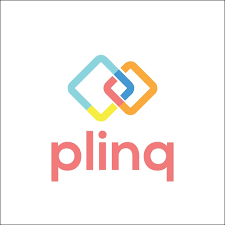
As organizations navigate the dynamic landscape of financial technology, a strategic consideration is paramount when seeking the perfect Plaid alternative for seamless financial data integration. This involves a thorough exploration of essential factors that go beyond mere functionality and delve into the intricacies of compatibility, security, scalability, and overall user experience. Each factor carries weight in shaping the decision-making process, as businesses aim to select an alternative that aligns precisely with their unique needs and objectives. This comprehensive evaluation ensures not only the current effectiveness of the chosen alternative but also its adaptability to future growth and evolving industry trends, creating a foundation for a resilient and optimized financial data integration ecosystem
1. Data Coverage and Source Diversity:
The breadth of data coverage and the diversity of supported sources play a pivotal role in determining the effectiveness of a Plaid alternative. A robust alternative should offer comprehensive connectivity to a wide array of financial institutions, ensuring that users can seamlessly link their bank accounts, credit cards, and various investment portfolios. The ability to aggregate data from different sources enhances the utility of the alternative, providing users with a holistic and accurate representation of their financial landscape.
2. Security and Compliance:
Security is non-negotiable when dealing with financial data, making it imperative to scrutinize the security measures implemented by a Plaid alternative. Look for end-to-end encryption protocols, robust tokenization mechanisms, and a steadfast commitment to compliance with data protection regulations such as GDPR or other regional standards. A trustworthy alternative should prioritize the safeguarding of sensitive financial information, instilling confidence among both users and developers.
3. Ease of Integration and Developer-Friendly Features:
The seamless integration of a Plaid alternative into your application is essential for a smooth user experience. Assess the developer tools and documentation provided by the alternative, ensuring they are user-friendly and well-documented. Look for clear and concise APIs that facilitate a straightforward integration process. Developer-friendly features, such as sandbox environments for testing, debugging tools, and comprehensive documentation, contribute to a streamlined development process, reducing the time and effort required for successful implementation.
4. Scalability and Performance:
Anticipating the growth of your application, scalability becomes a critical factor in the selection of a Plaid alternative. Evaluate the scalability options offered by the alternative, ensuring it can handle increasing user loads and expanding data volumes without compromising performance. A scalable solution is vital for accommodating the organic growth of your user base, preventing disruptions in service, and maintaining a responsive and reliable user experience even as demands on the system increase.
5. Pricing Structure and Cost Transparency:
Understanding the pricing structure of a Plaid alternative is essential to align it with your budgetary considerations. Look for transparent pricing models that clearly outline costs, including any potential additional fees tied to usage or specific features. Consider whether the pricing scales proportionally with the growth of your application and whether there are any hidden costs associated with accessing particular functionalities. A clear and transparent pricing structure allows for better financial planning, ensuring that the chosen alternative remains cost-effective throughout the lifecycle of your application.
Conclusion
In conclusion, the quest for the perfect Plaid alternative involves a meticulous examination of multifaceted factors, each serving as a crucial determinant in the decision-making process. From data coverage and security to ease of integration, scalability, and transparent pricing models, these considerations collectively shape the landscape of financial data integration. The dynamic nature of the fintech sector demands a thoughtful approach, where organizations must balance immediate needs with long-term scalability.
By prioritizing these factors, businesses can make informed decisions that not only address current requirements but also lay the groundwork for a robust and future-proof financial data integration strategy. In essence, the journey towards selecting the ideal Plaid alternative is a strategic endeavor that contributes significantly to the seamless evolution of financial technology applications.




